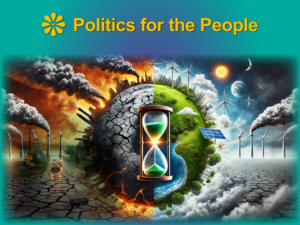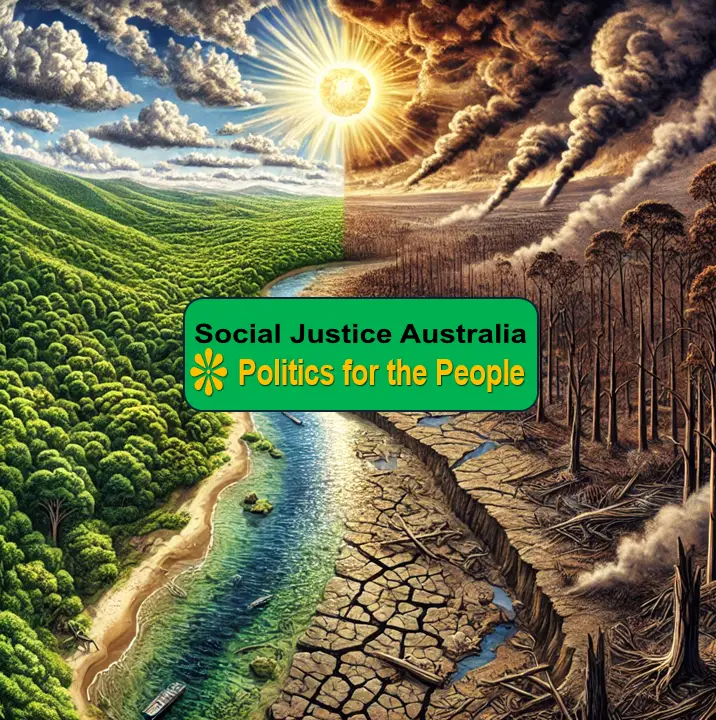Description
Discover how Australia uses discounting function in climate policies that undervalues future generations. Explore solutions for fair and urgent climate action.
Introduction
Australia’s climate policies are shaped by a tool most people have never heard of the “discounting function“. Used to evaluate the costs and benefits of policies, this function often leads to undervaluing future benefits and overemphasizing present costs. The result? Delayed climate action and policies that do not protect future generations.
This article explores how discounting functions, particularly the use of discount rates, influence decision-making in Australia, leading to inadequate responses to climate change. We’ll examine its applications, global comparisons, and propose solutions for a fairer approach.
Australian Government and Discounting Function
The Australian government employs discounting functions in its policy evaluations, including those related to climate change. Discounting is a standard practice in cost-benefit analyses to assess the present value of future costs and benefits. The Office of Impact Analysis provides guidance on conducting cost-benefit analyses, emphasizing the importance of discounting future costs and benefits to obtain present values. Reference: https://oia.pmc.gov.au/resources/guidance-assessing-impacts/cost-benefit-analysis?utm_source=chatgpt.com
Additionally, the Productivity Commission has discussed the significance of selecting discount rates in cost-benefit analyses, noting that the choice of discount rate can significantly affect project viability, especially for long-term projects like those addressing climate change. Reference: https://www.pc.gov.au/research/supporting/cost-benefit-discount/cost-benefit-discount.pdf?utm_source=chatgpt.com
These references illustrate that discounting is an integral part of the Australian government’s policy assessment framework, influencing decisions on various projects, including those aimed at mitigating climate change.
Understanding the Discounting Function
What Is Discounting?
Discounting is a method used in cost-benefit analyses to calculate the present value of future benefits and costs. By applying a discount rate, it reduces the perceived value of future outcomes. For example, saving $1 million in 30 years might be valued today at much less, depending on the rate used. This mathematical approach underpins decisions across government and business.
Key components of discounting:
– Discount Rate: The percentage used to reduce the value of future benefits.
– Present Value: The value today of a future sum of money or benefit.
The Role of Discount Rates in Policy
In policymaking, discount rates guide decisions about long-term projects, especially those involving infrastructure, health, and the environment. A higher discount rate diminishes the importance of future benefits, often tipping the scales against projects with long-term gains like renewable energy or conservation initiatives.
Discount rates applied to infrastructure, health, and the environment often differ depending on the project and jurisdiction. Here’s an overview based on general practices and the Australian context:
Infrastructure
Discount rates for infrastructure projects typically range between 4% to 7%, as recommended by government agencies like Infrastructure Australia. These rates aim to evaluate the present value of long-term investments, such as highways or rail systems. Higher rates can undervalue future benefits, leading to prioritization of short-term projects over transformative infrastructure like renewable energy grids.
Health
In health economics, discount rates are often lower, around 3% to 5%, reflecting the ethical consideration of future lives and health outcomes. However, higher rates can still lead to undervaluation of preventive measures, such as funding for climate-resilient healthcare infrastructure, making it less likely to be prioritized.
Environment
For environmental policies, the discount rates can vary widely, often aligning with general cost-benefit analysis rates of 3% to 7%. High discount rates severely devalue long-term benefits like biodiversity conservation or emission reductions, discouraging immediate investment in essential climate projects.
By contrast, some countries use lower or zero rates for critical long-term policies. For instance, Sweden applies near-zero rates for sustainability-focused projects, valuing future generations more equitably.
These rates profoundly shape policy outcomes, and adopting lower discount rates for all three sectors could prioritize projects that benefit society and the environment in the long run.
Why Discounting Favours the Present Over the Future
The philosophical basis of discounting assumes that future benefits are inherently less valuable than immediate ones. This prioritization leads to an ethical dilemma: it devalues the lives and wellbeing of future generations. By discounting future climate-related benefits, governments often justify insufficient action today, despite unmistakable evidence of impending risks.
The Application of Discounting in Australian Climate Policy
Fossil Fuel Subsidies and Investments
Australia’s continued support for fossil fuel industries is a stark example of discounting in action. Government backing for coal and gas projects is often justified by the immediate economic benefits, while the long-term environmental costs are heavily discounted. Recent subsidies exceeding $11 billion illustrate this imbalance, prioritizing short-term job creation over long-term climate stability.
Climate Mitigation and Adaptation Delays
 Large-scale renewable energy projects and climate adaptation strategies often face delays or rejections due to perceived high upfront costs. For instance, transitioning to 100% renewable energy in Australia—an achievable goal—is often sidelined in favour of keeping existing fossil fuel infrastructure. Discounting makes these transformative projects appear economically unfeasible.
Large-scale renewable energy projects and climate adaptation strategies often face delays or rejections due to perceived high upfront costs. For instance, transitioning to 100% renewable energy in Australia—an achievable goal—is often sidelined in favour of keeping existing fossil fuel infrastructure. Discounting makes these transformative projects appear economically unfeasible.
The Impact on Australian Communities
The effects of undervaluing future benefits are already visible in communities across Australia. Increased bushfires, droughts, and floods disproportionately affect rural and Indigenous communities. Stories from places like Lismore, devastated by unprecedented flooding, highlight the human cost of delayed action.
Global Perspectives and Comparisons
Countries Reforming Discount Rates
Some nations have adopted low or even zero discount rates for climate policies. Sweden, for example, applies a near-zero discount rate to prioritize sustainability, ensuring that future generations are not disadvantaged. New Zealand’s approach to long-term environmental planning provides another model for valuing the future equitably.
International Agreements and Discounting
Australia’s commitments under international agreements like the Paris Accord are undermined by its use of high discount rates. The Paris Accord aims to limit global warming to well below 2°C, yet Australia’s approach to discounting weakens its resolve. By applying steep discount rates, the long-term benefits of avoiding catastrophic climate change are diminished in current policy evaluations. This discrepancy makes Australia’s targets appear less urgent and achievable.
A global consensus on standardizing how future benefits are valued is critical. Countries must agree to lower discount rates for climate policies to ensure that future generations are adequately protected.
For example, the Intergovernmental Panel on Climate Change (IPCC) emphasizes the need for equity and long-term planning in meeting climate goals. Aligning Australia’s discount rates with these international principles would strengthen its ability to meet commitments, contribute meaningfully to global efforts, and restore credibility in its climate leadership.
The Path Forward for Australia
Redefining Discount Rates for Climate Action
Australia must adopt zero or negative discount rates for climate policies. This shift would:
– Ensure that future lives are valued equally to those of today.
– Promote investments in renewable energy and climate resilience.
– Align economic decisions with the moral imperative to combat climate change.
Public Advocacy and Awareness
Educating the public about the impact of discounting can drive change. Grassroots movements, supported by clear and accessible information, can pressure governments to prioritize future generations. Campaigns highlighting personal stories of climate impact can resonate with voters and policymakers alike.
Corporate Accountability
Corporations exploit discounting to maximize profits, often lobbying against climate regulations. Stricter oversight and transparent reporting on environmental impacts can align corporate interests with long-term sustainability. Policies that hold businesses accountable for future damages are essential.
Addressing Counterarguments
Economic Feasibility
Critics argue that ambitious climate policies are too costly. However, evidence shows that inaction leads to far greater economic losses due to disasters and health crises. Studies reveal that every dollar invested in renewable energy returns multiple benefits in reduced healthcare costs and improved productivity.
The “Investor Logic” Trap
Governments often mimic investor logic, prioritizing short-term returns over long-term wellbeing. This approach does not account for the non-monetary value of a liveable planet. Shifting to a framework that values ecological and social outcomes can break this cycle.
Q&A Section
Q1: What is the discounting function, and why is it important?
The discounting function is a method used in cost-benefit analyses to calculate the present value of future benefits or costs. It is crucial because it influences how governments and businesses make long-term decisions. A higher discount rate often devalues future outcomes, which can justify delaying critical actions, such as those needed to address climate change.
Q2: How does discounting impact Australia’s climate policies?
In Australia, discounting leads to policies that prioritize immediate economic gains, such as fossil fuel subsidies, over long-term benefits like environmental sustainability. This results in delayed renewable energy projects and inadequate responses to climate crises, disproportionately affecting vulnerable communities.
Q3: What are some proposed solutions to reform discounting practices?
Proposed solutions include adopting zero or negative discount rates for climate-related policies, increasing public awareness about the impact of discounting, and implementing stricter corporate accountability measures. These steps can ensure that future lives and ecosystems are valued equally to those of today.
Conclusion
To safeguard Australia’s future, we must rethink how discounting functions shape climate policy. Valuing future lives and ecosystems equally to those of today is not just an ethical imperative but an economic necessity. Immediate action on renewable energy, adaptation strategies, and corporate accountability can transform Australia into a leader in global climate efforts.
Call to Action
Do you see opportunities for community-driven change in Australia’s dollar sovereignty?
If you found this article insightful, explore more about political reform and Australia’s monetary sovereignty on Social Justice Australia: https://socialjusticeaustralia.com.au/.
Share this article with your community to help drive the conversation toward a more just and equal society.
Click on our “Reader Feedback” menu. Let us know how our content has inspired you. Submit your testimonial and help shape the conversation today!
Additionally, leave a comment about this article below.

